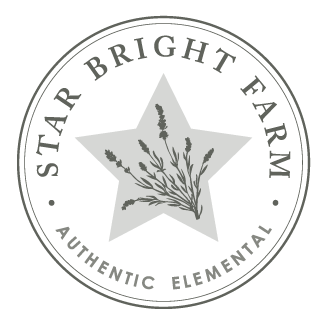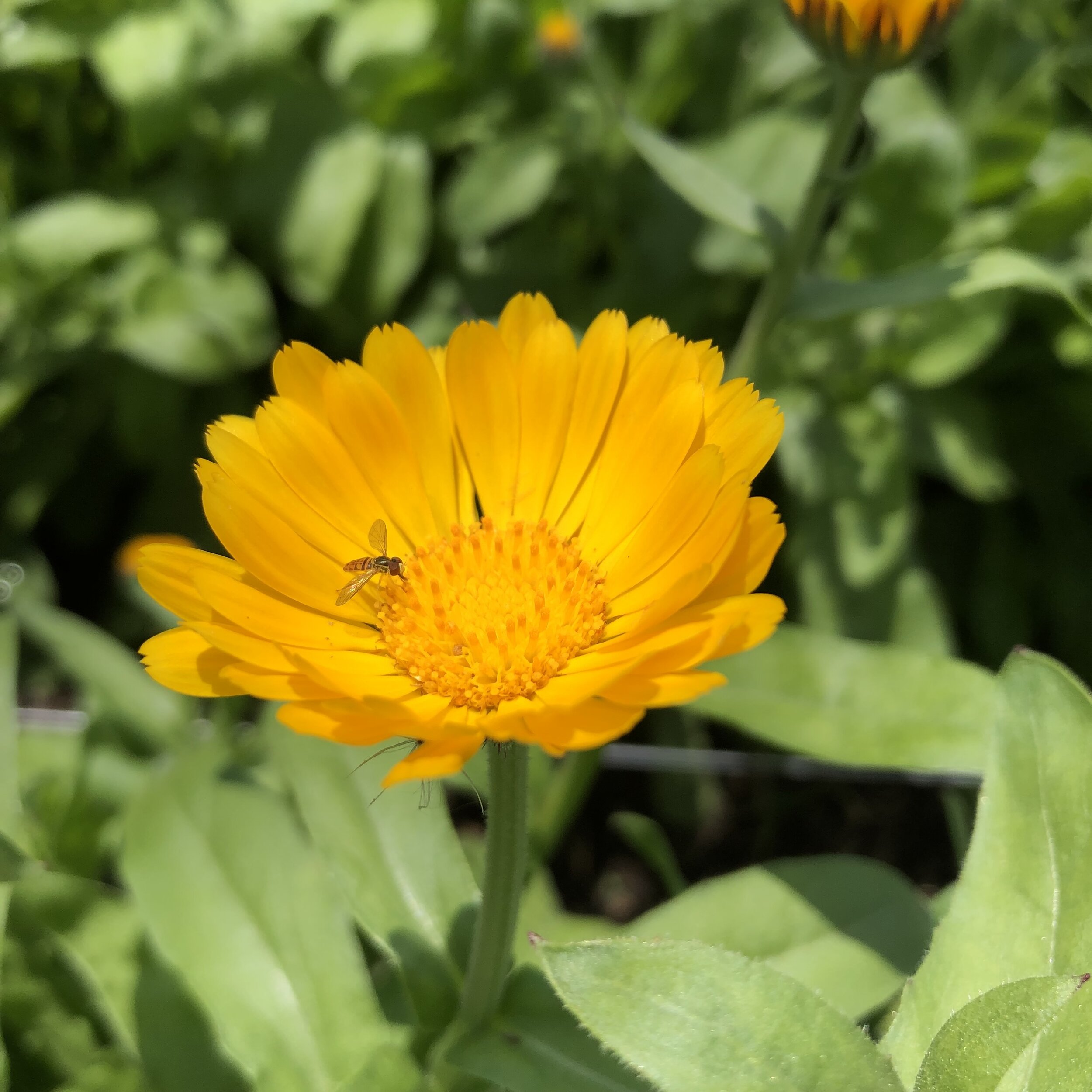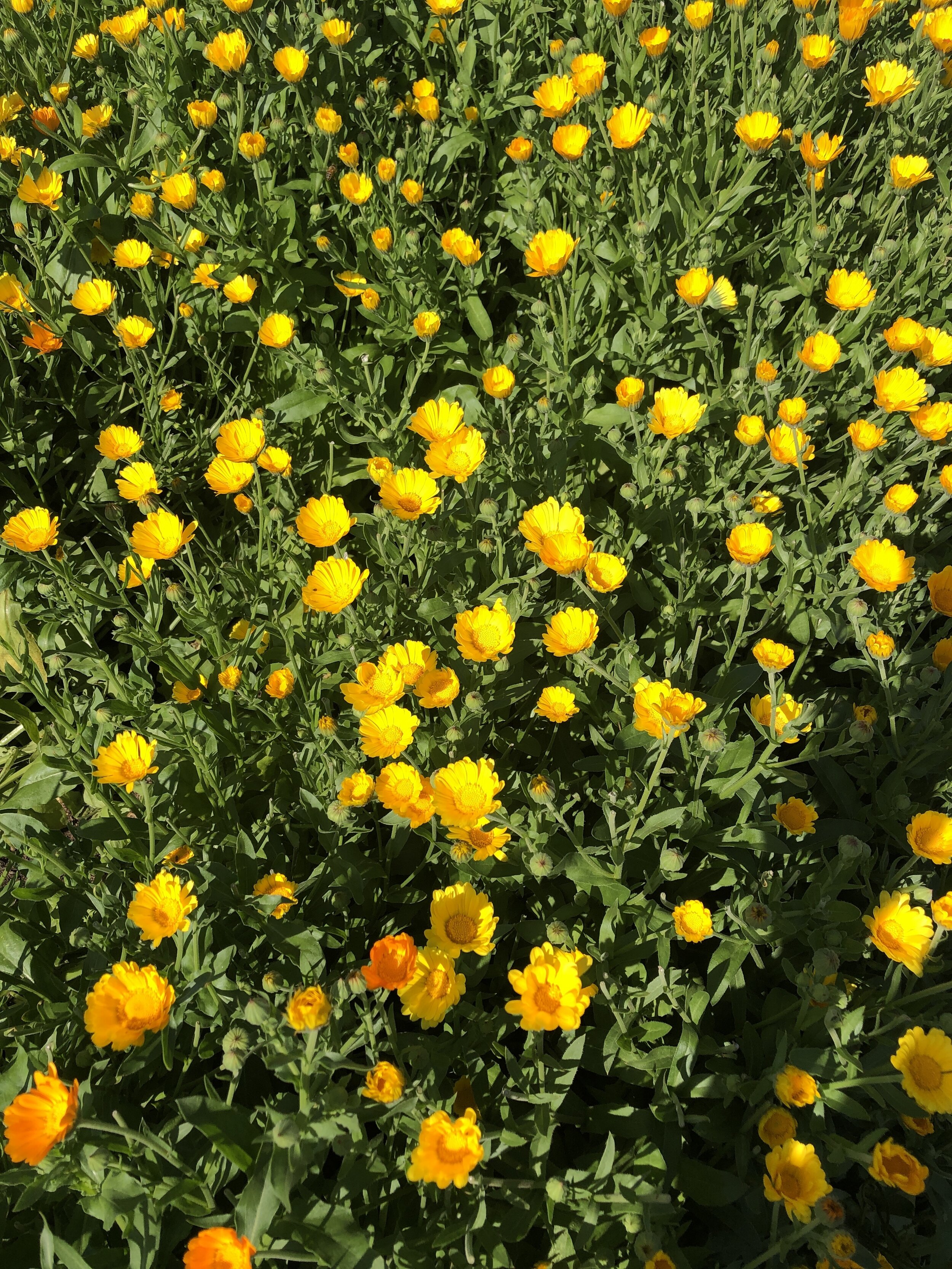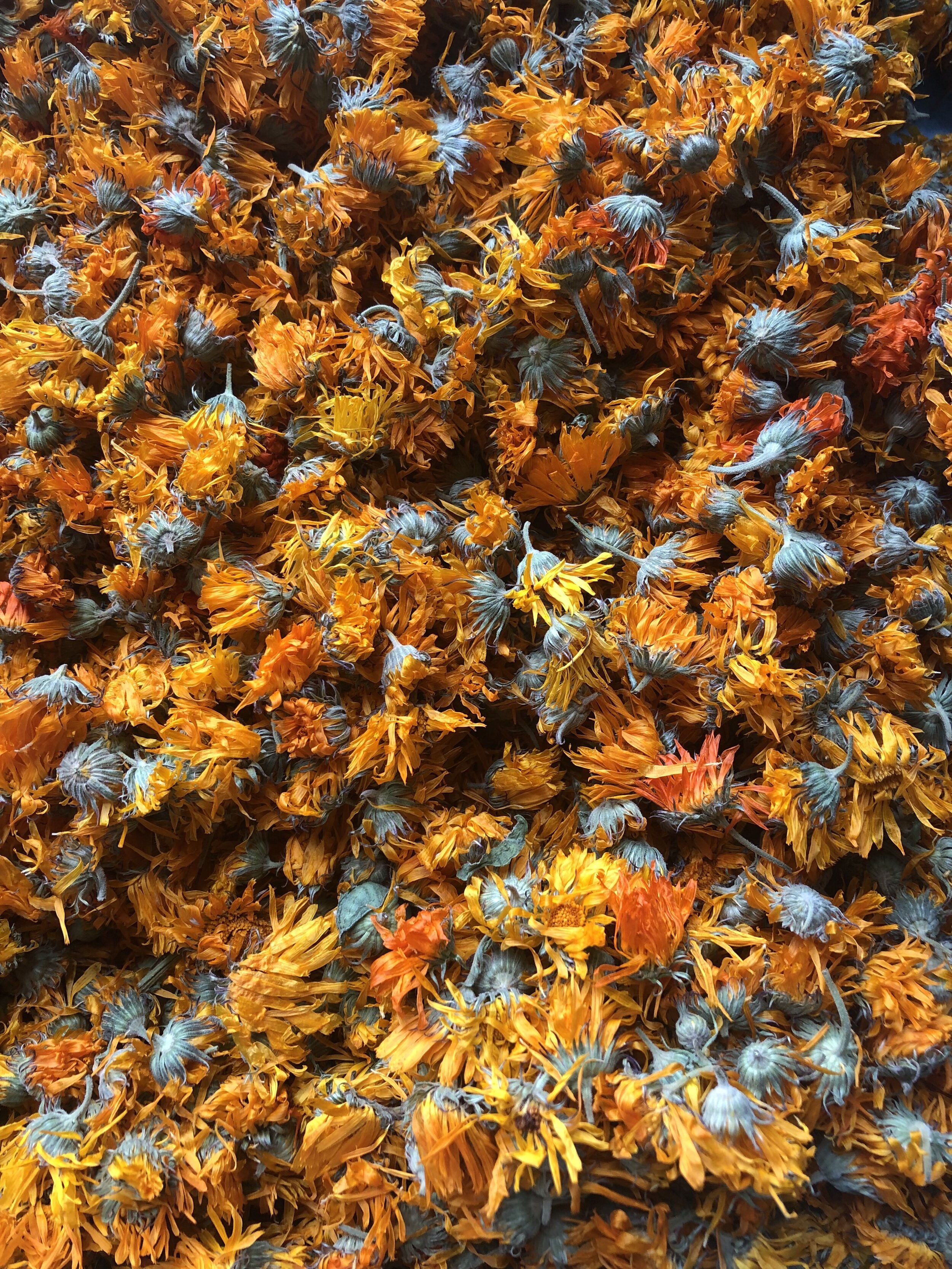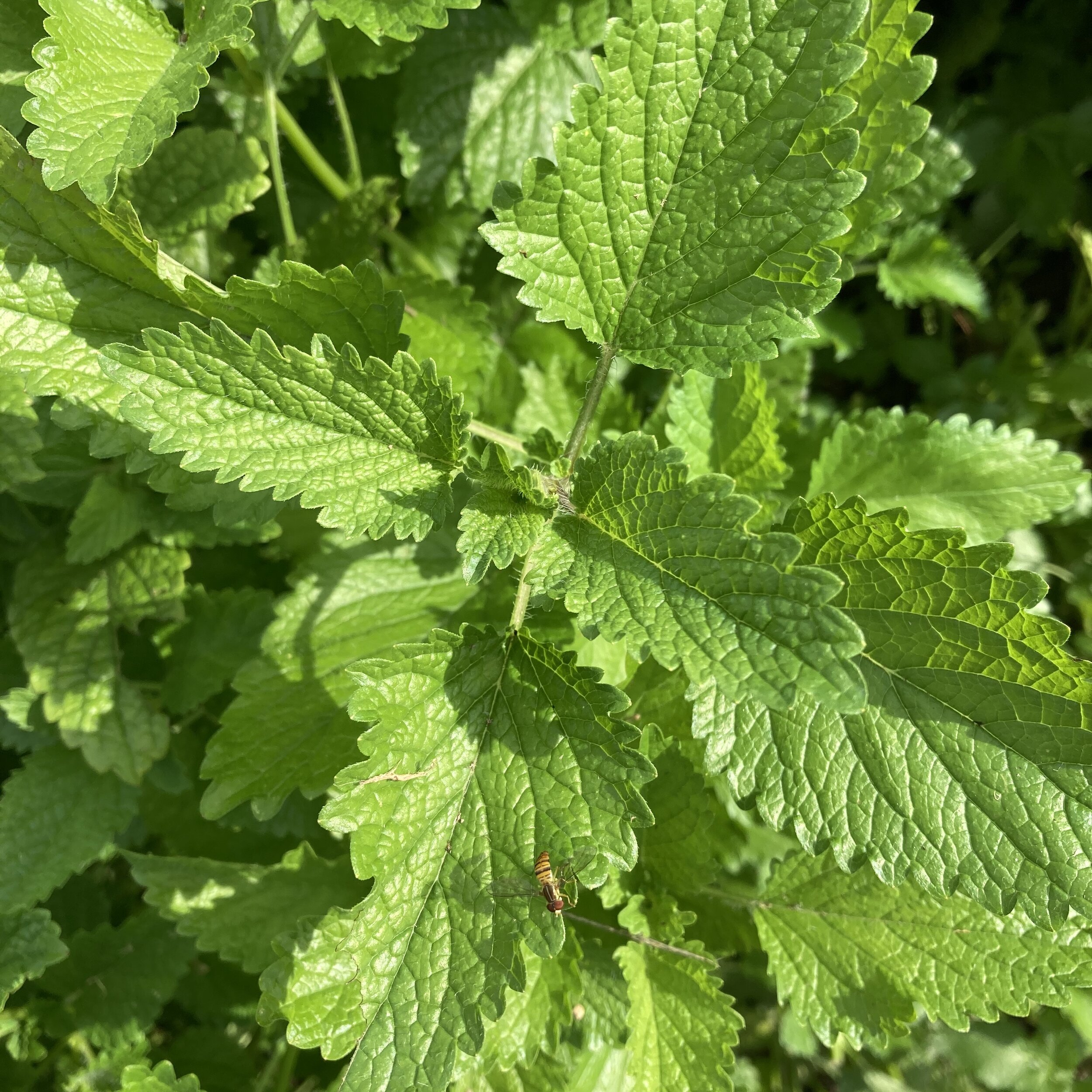Herb Profiles: Calendula and Lemon Balm
Herb Profiles - Calendula and Lemon Balm
Hello friends!
Some of you may know that in addition to lavender, we also grow nearly two dozen other herbs on our farm. We use our herbs in lots of ways: to distill into our hydrosols and essential oils, to make tinctures from fresh herbs, and finally, we we also dry herbs for teas. Each month we will highlight a few herbs so that you can get to know them and appreciate them for what makes each of them unique - and understand why they work so well with other herbs grown in our fields.
Peter will share his grower's perspective on each herb, and we'll show you how each can be used in your own lives, whether through Star Bright Farm's products or on your own at home. Let's start with Calendula and Lemon Balm.
Common name: Calendula
Scientific name: Calendula officinalis
History and country/region of origin: Likely native to southern Europe but has widely naturalized across Northern Europe and to many warmer temperate zones. It has a very long history of cultivation, so its exact origin is hard to pin down. It is well adapted to the temperate mid-Atlantic. It is cold-tolerant to survive late frosts in the spring or early ones in the fall. Flowers well in warm summers and grows well through Maryland’s often wet summertime but does prefer its soil to be well drained.
Good for: Excellent anti-inflammatory both externally and internally. To use externally, infuse the resinous flowers in an organic carrier oil (sunflower, safflower and olive work well), and apply to skin. If consuming internally, mix with a tea blend; it has a very mild flavor but is great for soothing an irritated/inflamed stomach or gut. Calendula is also known for healing shallow cuts and abrasions. It has compounds known to help with tissue regeneration and has also demonstrated antimicrobial properties. Calendula is also one of the few naturally astringent plants.
Works well with: Calendula works great with other medicinals that promote healing properties, especially aromatic varieties. Our favorite anti-inflammatory blends with Calendula are Lavender and Chamomile because of their complementary soothing properties and lovely aromas. Yarrow and Comfrey are good pairings in a healing salve due to their respective healing properties. In a healing tea blend, Calendula is great with the likes of Lemon Balm for their complementary anti-inflammatory, antimicrobial and antioxidant properties.
Can be found in Star Bright Farm products: Lavender Mint Body Butter, Lavender Vanilla Body Cream, Lip Butter, Afternoon Sun Herbal Tea Blend. Thanks to Calendula, all of these products have a rejuvenating effect on the skin or tummy.
Food or cocktail recipe using Calendula products: We use it when mixing up a cup of Winter’s Bane, a healing tea blend. To assemble, use 3 parts Lemon Verbena, 2 part Lemon Balm, 1 part Calendula, 1 part Anise Hyssop, 1 part Echinacea (in our crop plan for next year).
Common name: Lemon Balm
Scientific name: Melissa officinalis
History and country/region of origin: An adaptable member of the mint family with wide origins around South-Central Europe, the Mediterranean Basin, Iran and Central Asia; though, at this point it has also naturalized in the Americas and elsewhere. Like its cousin, mint, it grows very well and adapts to a range of temperate climates from cold to warm and is tolerant of wet soil. The plant grows small white flowers that produce throughout the growing season and are very attractive to honey bees. The name “Melissa” in the genus name is the Greek word for honey bee. Given its proclivity to grow well, its attractiveness to bees (leading to honey production), and its lovely lemony mint flavor, Lemon Balm has a long history in Roman, Greek and Persian cuisine and medicine.
Good for: Anti-inflammation and wound healing. Lemon Balm is high in Rosmarinic acid, a compound known for reducing stress and anxiety. So Lemon Balm is often used in teas, tinctures and perfumes to help calm the mind and reduce anxiety. Lemon Balm is also known as a carminative, meaning that its consumption can help reduce bloating and gas in the stomach and gut. Lemon Balm has strong antioxidant activity and has compounds that are antiviral, antimicrobial and anti mutoral (meaning they help prevent the development of cell mutation leading to tumors). While extensively studied, it is hard to pinpoint conclusions about overall efficacy and create proper clinical dosages. Nonetheless, consumption of Lemon Balm and application of Lemon Balm products as part of a regular routine are good for promoting holistic health and longevity.
Works well with: Works great in product blends with Lavender (complementary benefits to the nervous system and anti-inflammatory properties). Lemon Balm (Melissa) hydrosol is great when blended with infused Calendula oil, or when infusing dried Lemon Balm leaves with Calendula in making an antioxidant body/face oil. We’ve also found it works great in tea blends with Peppermint, Anise Hyssop, Echinacea, milky oats, Calendula and Lemon Verbena.
Can be found in Star Bright Farm products: Breathe Deep Herbal Tea, Afternoon Sun Herbal Tea, Lemon Balm (Melissa) Hydrosol.
Food or cocktail recipe using Lemon Balm products: We love it fresh in a salad (when in season) but in moderation as a complement (just a Lemon Balm salad would be a bit intense!). Amazing when cooked with fish, chicken or other light proteins. To incorporate into a recipe, either marinate protein in a lemon balm, oil, vinegar blend for a day, or make a reduction with similar ingredients (plus some cream) to pour over top.
SAVE THE DATE! Sweetheart Shopping February 12, 4-7pm
and February 13/14 from 11am-5pm
Lemon Balm Hydrosol is especially good for skin balancing as a facial toner and body tonic. Works well on mature skin. Lemon Balm is widely known to help stabilize mood by reducing stress and anxiety.
